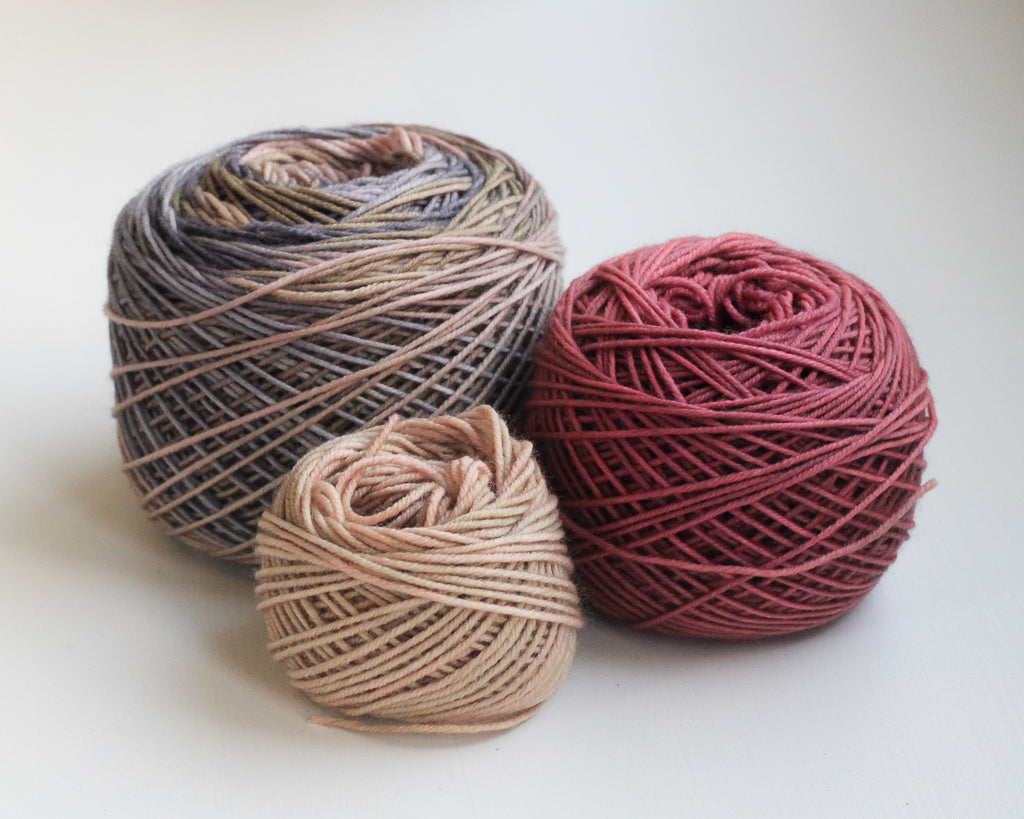- Wind the two solid colours in their own balls, so you can easily pull from them for the heels/toes/cuffs.
- Wind the striped portion into one ball. Knit your first sock, and then, for matching socks, pull off yarn until you see your starting colour again.
There are ten stripes in the sequence (5 greys, 5 tan/brown/peach for Saxe Point) and the sequence repeats six times. So there are 60 stripes in total. If you would like to divide the stripes into two separate balls, you can count the colour changes to find the halfway point.
UPDATE with instructions on how to wind the yarn:
Place the hank on a swift or around a friend's hands as usual. Start winding from either end and watch what's happening with the yarn.
If you the colours are changing every 4 m or so, you're at the self-striping end. Wind the yarn into a ball until the end of the striped section; all the grey will be in your ball and only the main and contrast colours will remain in the hank. At the transition from stripes to main colour, cut the yarn. Wind the main colour into a new ball. At the transition from main to contrast colour, cut the yarn. Wind the contrast colour into a new ball.
If there is a long section of a solid colour, you're at the contrast colour end. Wind the yarn into a ball; there's about 40 m of the contrast colour. At the transition from the contrast colour to the main colour, cut the yarn. Wind the main colour into a new ball. At the transition from the main colour to the stripes, cut the yarn. Wind the striped section into a new ball.


